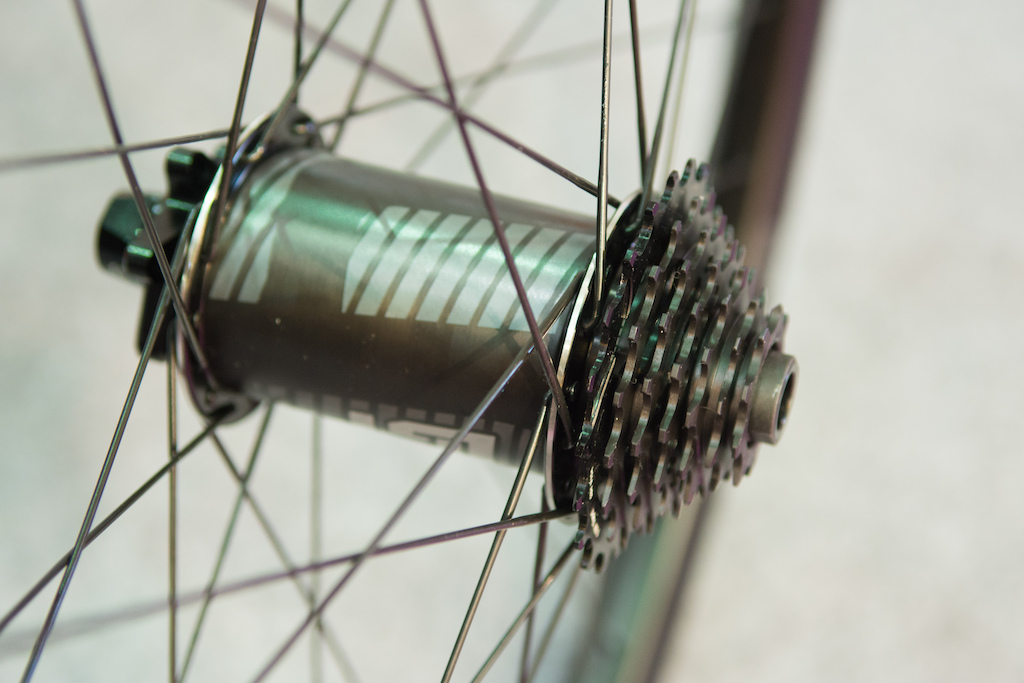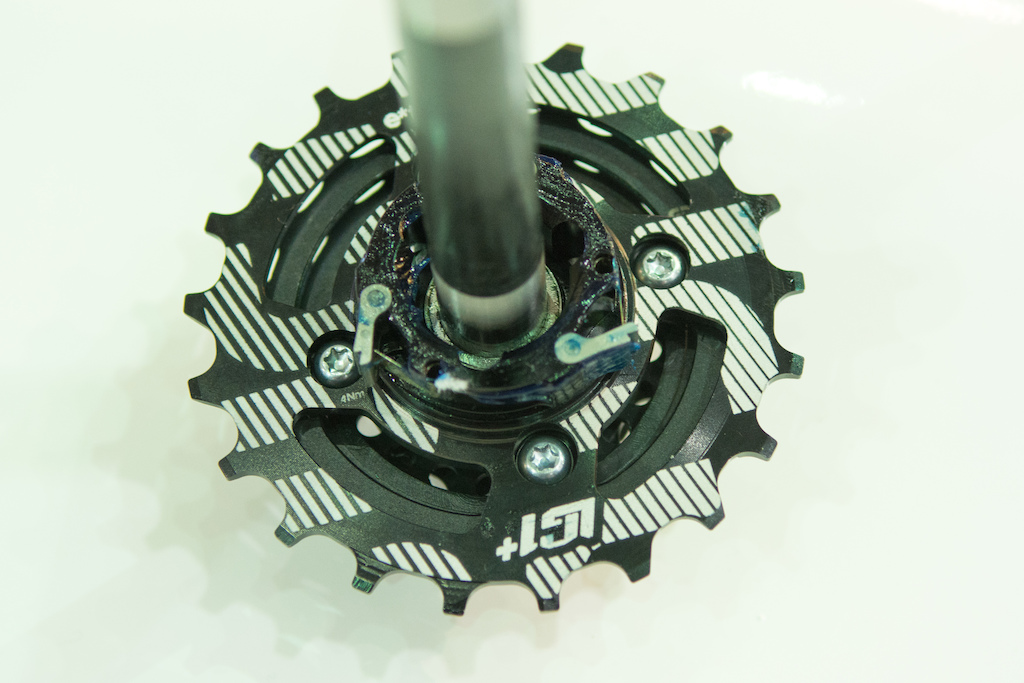e*thirteen's New DH Cassette - Taipei Show 2016
e*thirteen's extra wide range 9-44 tooth cassette made a splash when it was announced last year, and now the company is turning their sights on the DH race world with a new 9-21 tooth cassette designed specifically for an updated version of their LG1 downhill wheels. The pint-sized seven-speed cassette has the freehub mechanism attached directly to its aluminum 21 tooth cog (all of the other cogs are steel), a clever space saving design that allowed e*thirteen to increase the distance between the hub's flanges by 12 mm. This creates a better angle between the spokes and the rim, and in turn a stiffer wheel that's capable of handling the punishments doled out by World Cup racers.
Aaron Gwin and Mick Hannah both played a part in the cassette's development, and found that even with a 32 tooth chainring they still had a wide enough gear range to sprint from the start gate in the 21 tooth cog, and then drop further down the cassette without spinning out. Running a smaller chainring allows for more ground clearance, reducing the risk of suffering a race-ending mechanical. Although e*thirteen makes chainrings and cassettes, they don't make a derailleur of their own, leaving riders to choose their preferred brand, but they did say they had good results running a Shimano Saint derailleur with the new cassette.
The LG1 wheel and cassette combo is expected to be available in April in 12x150 and 12x157mm spacing, although the exact dates and pricing have not yet been determined.
The LG1 wheel and cassette combo is expected to be available in April in 12x150 and 12x157mm spacing, although the exact dates and pricing have not yet been determined.
Author Info:
Must Read This Week
Sign Up for the Pinkbike Newsletter - All the Biggest, Most Interesting Stories in your Inbox
PB Newsletter Signup




 Member since Feb 1, 2009
Member since Feb 1, 2009
The reason being, as every single link plate dips behind the one in front of it (if you have your chain fitted the right way round) the leaning edge of the link plate can't catch on things and get pulled off of the end of its pin.
Full halflink chains are for grind protection and nothing else.
www.craftsmanshipmuseum.com/images/KiefHD001.jpg
I'm not trying to be rude of argumentative, im actually trying to learn something new here
Again, your not trying to fit 150 in 148, your trying to fit 157 In 148. Its the biggest misconception to do with hubs. 135 and 150 are the same system (flat sided dropouts) and 142,148 and 157 are the same (3.5mm slots in the dropout to help locate the wheel and increase stiffness).
This is the reason why we stopped widening the rear dropouts at 135(130 on road bikes) with 8 speed, 6,7 & 8 are all wider than their predecessors, 9 & up stayed the same because really, there was no more room. There's a few reasons we can go wider now, but probably the biggest factor is no longer having to account for triple cranks, & the fact that MTB is now big enough that we don't have to piggyback on whatever road bikes are doing anymore (which isn't as long ago as some people seem to think.)
It's just a ratio
40/11=3.63
40/28=1.42
32/22=1.45
100/99=1.01
You're correct, however it's still just a ratio.
32/9=3.(5)
39/11=3.(54)
33/22=1.(45)
39/27=1.(4)
but obviously not in narrow/wide
The real measurement comes from the moments created by the distance that the chain sits from the cogs centre
When you think about it in percentages of drop it makes it a bit easier.
Dropping from a 100t to a 99t sprocket gives you a 1% difference in ratio. Whereas dropping from 10t to 9t, although still only dropping 1t, will make a 10% difference in the final ratio. Hope that helps.
Of course, now that I summoned it, we'll find out that SRAM 12 speed is a finer chain pitch(which might actually make sense in order to bring cog sizes down on the narrow end, I wonder if the problems SRAM said they had when testing a 9t go away if you have a cog with the same circumference, but more, finer teeth.)
Wonder how long will take for the gearing to stay on the frame while the wheel is removed without cogs?
I'm just super-thankful for the double upshifts that shimano provides. 10t driver is as small as I'll go.
But didn't SRAM nix a 9T cog because of the polygon effect in favor of a 10T? Obviously e13 has multiple cassettes with a 9T cog, but 7T does seem like it could be pushing the limits of how small you can go.
An how muck they cost to make. Maintain an replace.....
Now imagine a one piece unit. Only moving parts are pawls an bearings = less maintenance an easily replaceable
I think also a one piece design could be utilised for smaller cogs = lighter drive train an more compact. For example a 10-16 driver with a 30 or 32 chairing even 28!
A new design could tuck a derraileur right up out of harms way
I think a well designed one piece unit would even work oot cheaper!!
If your chainring gets in the way, you're not riding fast enough